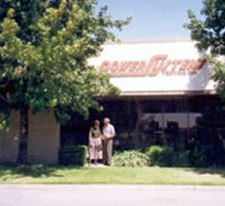
Arc Flash Training focuses on recent code revisions from NEC, OSHA and NFPA regarding electrical safety training, specifically electrical fault hazards. As well, our electrical safety training involves electrical inspectors who make special presentations about electrical safety codes and standards. Also, various personal protective equipment (PPE) and Flame Retardant clothing manufacturers will discuss the wide range of options available when it comes to personal protective clothing and electrical safety equipment.
We can provide onsite training that meets the OSHA requirements for Classroom type training. These classes not only meet the criteria of OSHA and NFPA 70E, it also means you don’t have to send your best assets away for extended periods of time.
OSHA CFR 1910.332(C) states that "The training required by this section shall be of the classroom or on-the-job type. The degree of training provided shall be determined by the risk to the employee."
2009 NFPA 70E Section 110.6(B) echoes OSHA's CFR by stating that "The training required by this section shall be classroom or on-the-job type, or a combination of the two. The degree of training provided shall be determined by the risk to the employee."
Attendees learn ALL safe work practices required to protect them from Shock and Arc Flash including but not limited to the identification of hazards associated with working on or near electrical circuits, shock and arc flash approach boundaries, Hazard Risk Category determination methods and proper PPE selection based on Hazard Risk Category, including actual PPE demonstrations.
Personalized Certificates of Completion are distributed after class for proof of compliance.

Electrical dangers such as shock, electrocution, arc flash, and arc blast will always be present on the job, but proper training and safety strategies can minimize the likelihood of injuries and fatalities. NFPA 70E - Electrical Safety in the Workplace - covers the full range of electrical safety issues from work practices to maintenance, special equipment requirements, and installation. In fact, OSHA in the United States already bases its electrical safety mandates on the comprehensive information in this important Standard.

The presentation is designed to inform delegates of the changes to the safety system:

The first section of this presentation will give an overview of how to perform a Hazard Assessment where the need to create or improve a Flame Resistant Clothing program exists. Hazard assessment techniques will be demonstrated and generic inherently flame resistant clothing programs will be discussed.:
Examples of the hazard assessment process and the selection and use of inherently flame resistant clothing will be presented.
